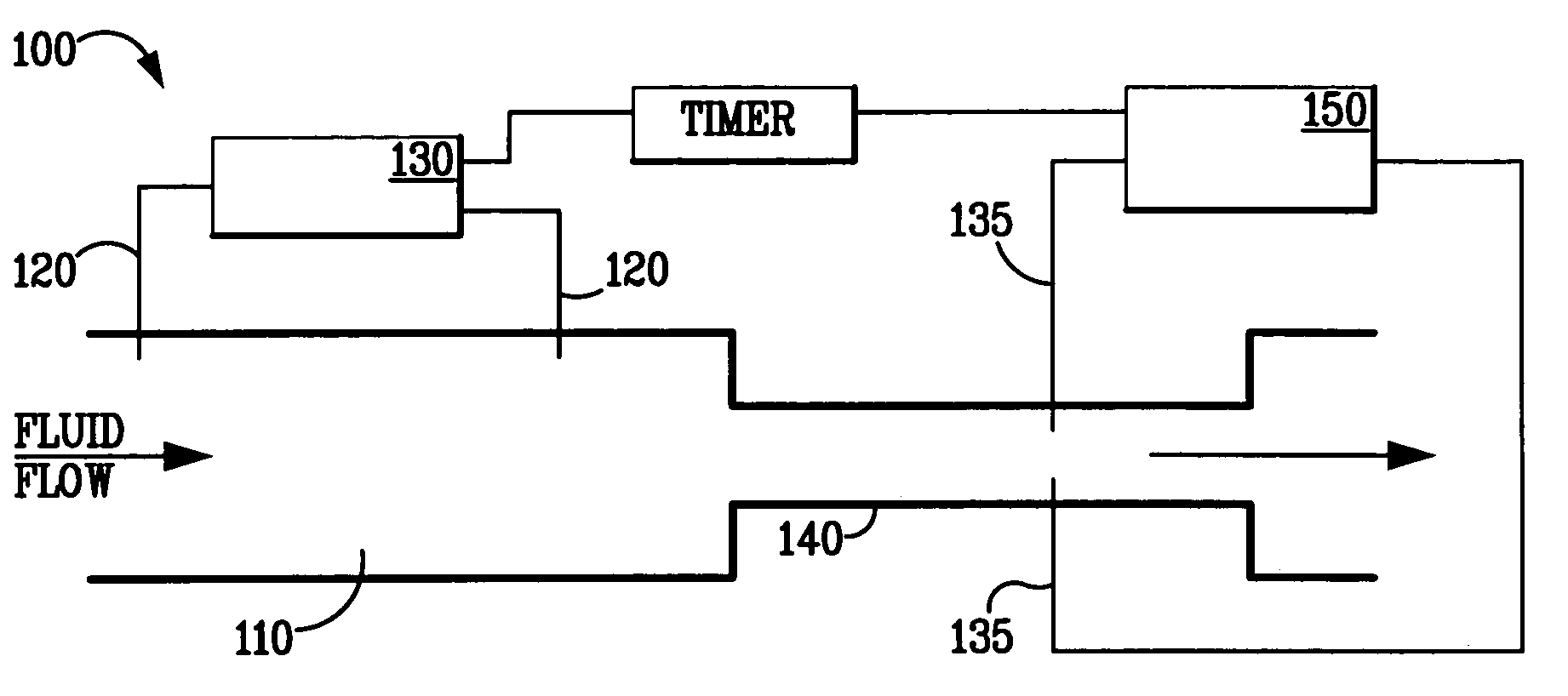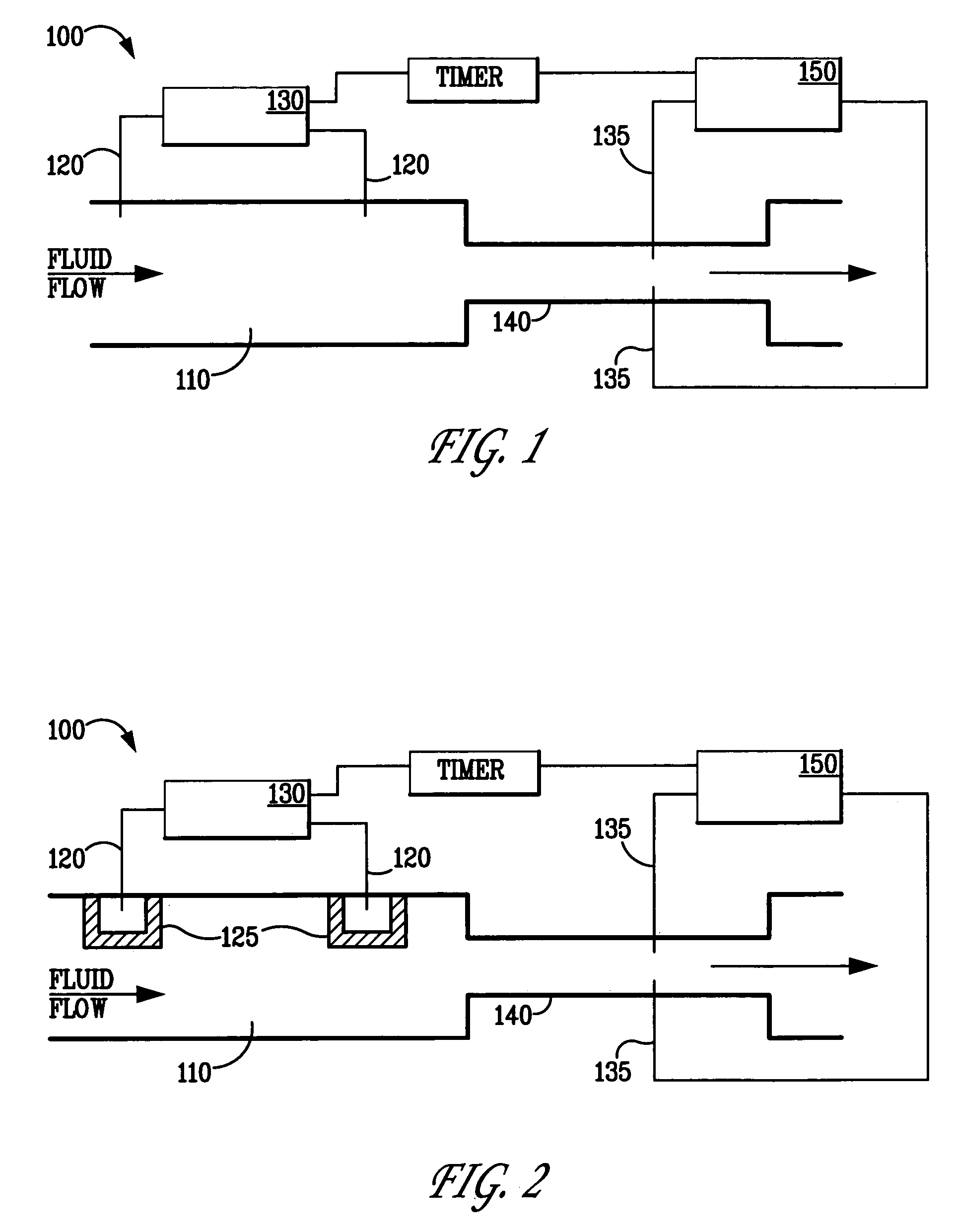Composition pulse time-of-flight mass flow sensor
a mass flow sensor and time-of-flight technology, applied in the direction of volume/mass flow by electromagnetic flowmeters, measurement devices, instruments, etc., can solve the problems of poor signal-to-noise at small flow rate, capable of operating at pressures as high as 2,000 psi, etc., and achieve rapid transport of ions and high reynolds number
- Summary
- Abstract
- Description
- Claims
- Application Information
AI Technical Summary
Benefits of technology
Problems solved by technology
Method used
Image
Examples
Embodiment Construction
[0038]An embodiment of the invention and its operation are illustrated schematically in FIG. 1. Flow sensor 100 comprises a flow channel 110 having a single fluid entrance and a single exit where fluid flow is from left to right. A pair of spaced-apart electrodes 120 for producing an electrochemical pulse, or pair of pulses, one on each electrode, and consequent variation in composition of the fluid, including changes in the concentration of some component in the fluid, is disposed within the flow channel and along the flow axis. Means for supplying a voltage pulse to the electrodes, such as power supply 130, is connected to the electrodes. A flight tube 140 that is concentric with flow channel 110 can be adjoined to the fluid exit of the flow channel. As will be appreciated by those skilled in the art, the dimensions of the flight tube can be selected for a particular flowrate range and fluid properties such as viscosity and ionic diffusivity to govern mass transport and hence, the...
PUM
 Login to View More
Login to View More Abstract
Description
Claims
Application Information
 Login to View More
Login to View More - R&D
- Intellectual Property
- Life Sciences
- Materials
- Tech Scout
- Unparalleled Data Quality
- Higher Quality Content
- 60% Fewer Hallucinations
Browse by: Latest US Patents, China's latest patents, Technical Efficacy Thesaurus, Application Domain, Technology Topic, Popular Technical Reports.
© 2025 PatSnap. All rights reserved.Legal|Privacy policy|Modern Slavery Act Transparency Statement|Sitemap|About US| Contact US: help@patsnap.com



